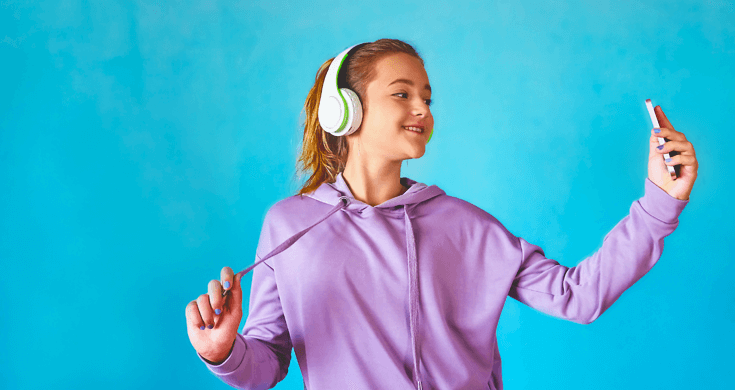Teachers and school officials around the country have begun to take notice of the fact that TikTok, a short-form video-creation tool and social media platform, is now one of the most popular apps with tweens and teens. While many teachers are trying to stop students from using the platform during school hours, others are embracing TikTok in the classroom in an attempt to make their assignments more interesting to kids. These teachers argue that by allowing the use of TikTok for school projects, students will retain more than they would through traditional lecture-based lessons and homework.
TikTok: The Basics
If your child has ever wanted to be a social media sensation, TikTok offers a chance at that dream. The platform allows users to create and share video content, including music videos, and it includes editing tools that make it possible for anyone to produce near-professional results.
Access to content can be limited to a select group of friends and family, so kids can enjoy the fun of video creation without the issues that come with sharing publicly. However, some families have concerns about the possibility that video content will be released to a larger audience or the privacy settings won’t be implemented. After all, even the most sophisticated privacy settings are not fail-safe.
TikTok in the Classroom
TikTok’s videography features have inspired some innovative teachers to develop TikTok-based assignments that are shared within closed classroom groups. Students work individually or together to create content that demonstrates their understanding of concepts, which promotes peer-to-peer teaching.
Applications for TikTok in the classroom are virtually limitless, and teachers have shared an imaginative array of media-based assignments. One Gaithersburg, Maryland, history teacher allowed students to create videos in lieu of essays to show what they had learned about the Missouri Compromise of 1820. Another teacher in Eastvale, California, offered the opportunity to use a TikTok video for a lesson comparing and contrasting historical trade routes and another project related to critical inventions during the Industrial Revolution.
Perhaps the most effective use of TikTok in the education arena is teacher-made videos that students can watch again and again. In the spirit of flipped classrooms, some teachers have created their own clips to explain complex concepts or share detailed assignment instructions.
This method benefits students, as they don’t have the distraction of trying to capture every word in their notes. Instead, they have unlimited access to a video version of the most important points. Using TikTok in this manner also prevents potential issues that come with student use.
Harnessing the Power of Social Media
Some parents and teachers are concerned that instead of promoting learning, allowing TikTok in the classroom is nothing more than a distraction. Those who have integrated the platform successfully note that they do take measures to limit the distraction factor. Specifically, they limit the time allotted to TikTok use, and they ensure that students are focused on the assigned task while logged into the platform. Their philosophy is that there is no sense in trying to fight against social media, and instead, they deliberately focus its power on improving educational outcomes.
Of course, even the most careful educators can’t prevent misuse of social media. A brief review of available content shows plenty of students creating videos during school hours that are unrelated to classwork. In fact, there is an entire sub-genre of videos set in high school bathrooms. While entertaining, administrators and families are working to discourage this trend, as there is a substantial possibility of privacy violations.
Avoiding Privacy Pitfalls
The beauty of social media is that it is free and open to a global audience. The downside to that is that not all users are careful about what they post. As kids choose public settings, such as a school bathroom, other kids may be featured in a video without their permission. As these videos can easily go viral, this possibility becomes a significant privacy issue.
It is also possible that your teens and tweens could come across mature content, so be sure they are using the appropriate settings to limit the likelihood of this occurring. Tik Tok’s privacy options make it possible to prevent your child’s account from showing up in searches, and with the right settings, outsiders can’t view uploaded content, leave comments, or send unsolicited messages.
What are your thoughts on the use of TikTok in the classroom? Let us know in the comments section.
If your concerned about the school culture’s impact on your child and want to consider bringing school home, visit K12.com to learn more about virtual and blended learning options in your area.





































